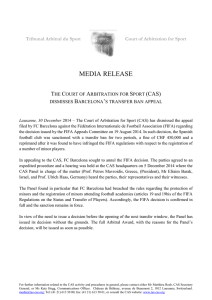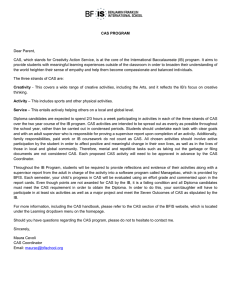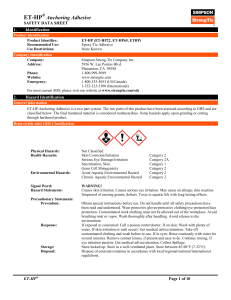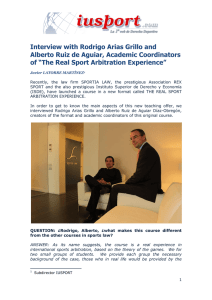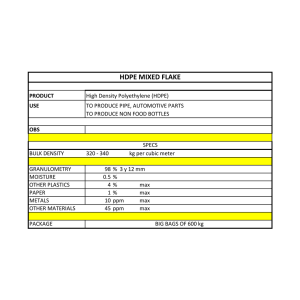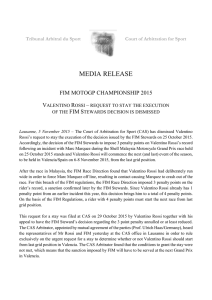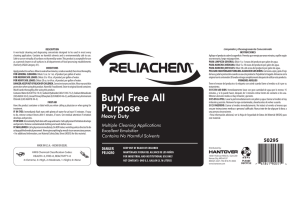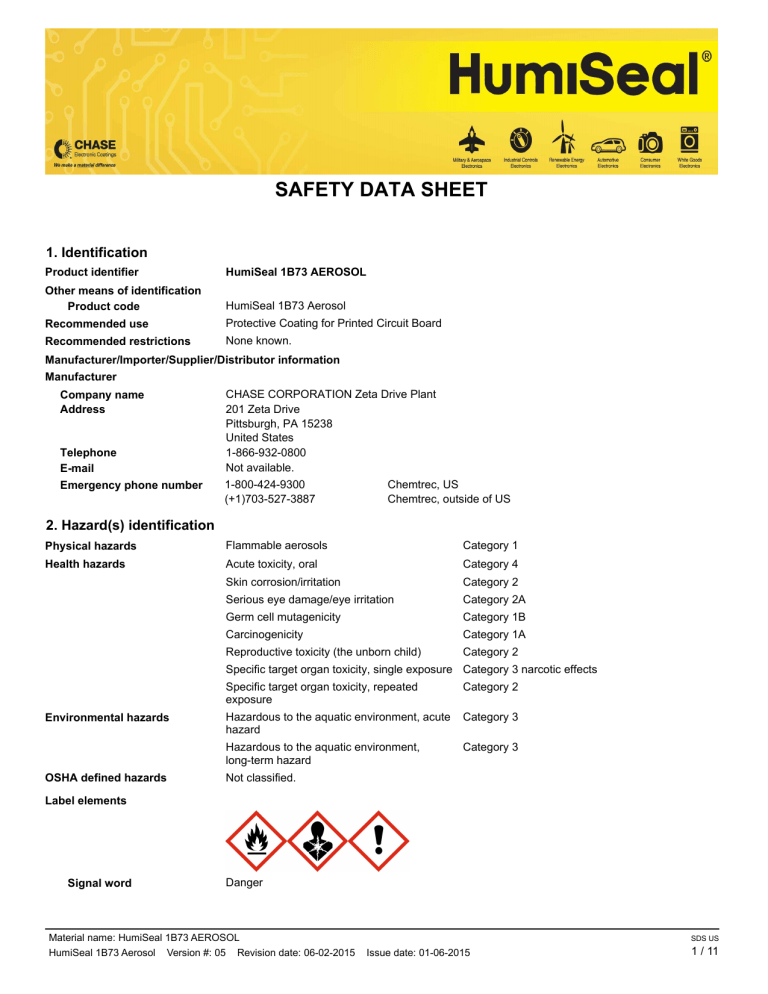
SAFETY DATA SHEET 1. Identification Product identifier HumiSeal 1B73 AEROSOL Other means of identification Product code HumiSeal 1B73 Aerosol Recommended use Protective Coating for Printed Circuit Board Recommended restrictions None known. Manufacturer/Importer/Supplier/Distributor information Manufacturer Company name Address Telephone E-mail Emergency phone number CHASE CORPORATION Zeta Drive Plant 201 Zeta Drive Pittsburgh, PA 15238 United States 1-866-932-0800 Not available. 1-800-424-9300 Chemtrec, US (+1)703-527-3887 Chemtrec, outside of US 2. Hazard(s) identification Physical hazards Flammable aerosols Category 1 Health hazards Acute toxicity, oral Category 4 Skin corrosion/irritation Category 2 Serious eye damage/eye irritation Category 2A Germ cell mutagenicity Category 1B Carcinogenicity Category 1A Reproductive toxicity (the unborn child) Category 2 Specific target organ toxicity, single exposure Category 3 narcotic effects Environmental hazards OSHA defined hazards Specific target organ toxicity, repeated exposure Category 2 Hazardous to the aquatic environment, acute hazard Category 3 Hazardous to the aquatic environment, long-term hazard Category 3 Not classified. Label elements Signal word Danger Material name: HumiSeal 1B73 AEROSOL HumiSeal 1B73 Aerosol Version #: 05 Revision date: 06-02-2015 SDS US Issue date: 01-06-2015 1 / 11 Hazard statement Precautionary statement Prevention Extremely flammable aerosol. Harmful if swallowed. Causes skin irritation. Causes serious eye irritation. May cause drowsiness or dizziness. May cause genetic defects. May cause cancer. Suspected of damaging the unborn child. May cause damage to organs through prolonged or repeated exposure. Harmful to aquatic life. Harmful to aquatic life with long lasting effects. Obtain special instructions before use. Do not handle until all safety precautions have been read and understood. Keep away from heat/sparks/open flames/hot surfaces. - No smoking. Do not spray on an open flame or other ignition source. Pressurized container: Do not pierce or burn, even after use. Do not breathe mist or vapor. Wash thoroughly after handling. Do not eat, drink or smoke when using this product. Use only outdoors or in a well-ventilated area. Avoid release to the environment. Wear protective gloves/protective clothing/eye protection/face protection. Response If swallowed: Call a poison center/doctor if you feel unwell. If on skin: Wash with plenty of water. If inhaled: Remove person to fresh air and keep comfortable for breathing. If in eyes: Rinse cautiously with water for several minutes. Remove contact lenses, if present and easy to do. Continue rinsing. If exposed or concerned: Get medical advice/attention. Call a poison center/doctor if you feel unwell. Specific treatment (see this label). Rinse mouth. If skin irritation occurs: Get medical advice/attention. If eye irritation persists: Get medical advice/attention. Take off contaminated clothing and wash before reuse. Storage Store in a well-ventilated place. Keep container tightly closed. Store locked up. Protect from sunlight. Do not expose to temperatures exceeding 50°C/122°F. Disposal Dispose of contents/container in accordance with local/regional/national/international regulations. Hazard(s) not otherwise classified (HNOC) None known. Supplemental information 27.04% of the mixture consists of component(s) of unknown acute oral toxicity. 60.46% of the mixture consists of component(s) of unknown acute hazards to the aquatic environment. 60.46% of the mixture consists of component(s) of unknown long-term hazards to the aquatic environment. 3. Composition/information on ingredients Mixtures Chemical name Common name and synonyms CAS number % METHYL ETHYL KETONE 78-93-3 20 - < 30 BUTANE 106-97-8 10 - < 20 n-BUTYL ACETATE 123-86-4 10 - < 20 PROPANE 74-98-6 10 - < 20 TOLUENE 108-88-3 10 - < 20 ETHYL-3-ETHOXY PROPIONATE 763-69-9 3-<5 Other components below reportable levels 5 - < 10 *Designates that a specific chemical identity and/or percentage of composition has been withheld as a trade secret. 4. First-aid measures Inhalation Skin contact Eye contact Ingestion Most important symptoms/effects, acute and delayed Indication of immediate medical attention and special treatment needed General information Remove victim to fresh air and keep at rest in a position comfortable for breathing. Call a POISON CENTER or doctor/physician if you feel unwell. Remove contaminated clothing. Wash with plenty of soap and water. If skin irritation occurs: Get medical advice/attention. Wash contaminated clothing before reuse. Immediately flush eyes with plenty of water for at least 15 minutes. Remove contact lenses, if present and easy to do. Continue rinsing. Get medical attention if irritation develops and persists. Rinse mouth. If vomiting occurs, keep head low so that stomach content doesn't get into the lungs. Get medical advice/attention if you feel unwell. May cause drowsiness and dizziness. Headache. Nausea, vomiting. Irritation of nose and throat. Severe eye irritation. Symptoms may include stinging, tearing, redness, swelling, and blurred vision. Skin irritation. May cause redness and pain. Prolonged exposure may cause chronic effects. Provide general supportive measures and treat symptomatically. Keep victim warm. Keep victim under observation. Symptoms may be delayed. IF exposed or concerned: Get medical advice/attention. If you feel unwell, seek medical advice (show the label where possible). Ensure that medical personnel are aware of the material(s) involved, and take precautions to protect themselves. Show this safety data sheet to the doctor in attendance. Material name: HumiSeal 1B73 AEROSOL HumiSeal 1B73 Aerosol Version #: 05 Revision date: 06-02-2015 SDS US Issue date: 01-06-2015 2 / 11 5. Fire-fighting measures Suitable extinguishing media Alcohol resistant foam. Water fog. Dry chemical powder. Carbon dioxide (CO2). Unsuitable extinguishing media Do not use water jet as an extinguisher, as this will spread the fire. Specific hazards arising from the chemical Contents under pressure. Pressurized container may explode when exposed to heat or flame. Special protective equipment and precautions for firefighters Firefighters must use standard protective equipment including flame retardant coat, helmet with face shield, gloves, rubber boots, and in enclosed spaces, SCBA. Fire fighting equipment/instructions Move containers from fire area if you can do so without risk. Containers should be cooled with water to prevent vapor pressure build up. For massive fire in cargo area, use unmanned hose holder or monitor nozzles, if possible. If not, withdraw and let fire burn out. Use standard firefighting procedures and consider the hazards of other involved materials. Move containers from fire area if you can do so without risk. In the event of fire and/or explosion do not breathe fumes. Extremely flammable aerosol. Specific methods General fire hazards 6. Accidental release measures Personal precautions, protective equipment and emergency procedures Methods and materials for containment and cleaning up Environmental precautions Keep unnecessary personnel away. Keep people away from and upwind of spill/leak. Keep out of low areas. Wear appropriate protective equipment and clothing during clean-up. Do not breathe mist or vapor. Do not touch damaged containers or spilled material unless wearing appropriate protective clothing. Ventilate closed spaces before entering them. Local authorities should be advised if significant spillages cannot be contained. For personal protection, see section 8 of the SDS. Refer to attached safety data sheets and/or instructions for use. Keep combustibles (wood, paper, oil, etc.) away from spilled material. This product is miscible in water. Stop leak if you can do so without risk. Move the cylinder to a safe and open area if the leak is irreparable. Cover with plastic sheet to prevent spreading. Absorb in vermiculite, dry sand or earth and place into containers. Prevent product from entering drains. Following product recovery, flush area with water. Small Spills: Wipe up with absorbent material (e.g. cloth, fleece). Clean surface thoroughly to remove residual contamination. For waste disposal, see section 13 of the SDS. Avoid release to the environment. Contact local authorities in case of spillage to drain/aquatic environment. Prevent further leakage or spillage if safe to do so. Do not contaminate water. Avoid discharge into drains, water courses or onto the ground. 7. Handling and storage Precautions for safe handling Conditions for safe storage, including any incompatibilities Obtain special instructions before use. Do not handle until all safety precautions have been read and understood. Pressurized container: Do not pierce or burn, even after use. Do not use if spray button is missing or defective. Do not spray on a naked flame or any other incandescent material. Do not smoke while using or until sprayed surface is thoroughly dry. Do not cut, weld, solder, drill, grind, or expose containers to heat, flame, sparks, or other sources of ignition. All equipment used when handling the product must be grounded. Do not re-use empty containers. Do not breathe mist or vapor. Avoid contact with eyes, skin, and clothing. Avoid prolonged exposure. Do not taste or swallow. When using, do not eat, drink or smoke. Use only in well-ventilated areas. Should be handled in closed systems, if possible. Pregnant or breastfeeding women must not handle this product. Wear appropriate personal protective equipment. Wash hands thoroughly after handling. Observe good industrial hygiene practices. Avoid release to the environment. Do not empty into drains. Level 3 Aerosol. Store locked up. Pressurized container. Protect from sunlight and do not expose to temperatures exceeding 50°C/122 °F. Do not puncture, incinerate or crush. Do not handle or store near an open flame, heat or other sources of ignition. This material can accumulate static charge which may cause spark and become an ignition source. Refrigeration recommended. Keep out of the reach of children. Store away from incompatible materials (see Section 10 of the SDS). 8. Exposure controls/personal protection Occupational exposure limits US. OSHA Table Z-1 Limits for Air Contaminants (29 CFR 1910.1000) Components Type METHYL ETHYL KETONE (CAS 78-93-3) PEL Value 590 mg/m3 200 ppm Material name: HumiSeal 1B73 AEROSOL HumiSeal 1B73 Aerosol Version #: 05 Revision date: 06-02-2015 SDS US Issue date: 01-06-2015 3 / 11 US. OSHA Table Z-1 Limits for Air Contaminants (29 CFR 1910.1000) Components Type Value n-BUTYL ACETATE (CAS 123-86-4) PEL 710 mg/m3 PROPANE (CAS 74-98-6) PEL 150 ppm 1800 mg/m3 1000 ppm US. OSHA Table Z-2 (29 CFR 1910.1000) Components Type Value Ceiling TWA 300 ppm 200 ppm Type Value STEL STEL 1000 ppm 300 ppm TWA STEL 200 ppm 200 ppm TWA TWA 150 ppm 20 ppm TOLUENE (CAS 108-88-3) US. ACGIH Threshold Limit Values Components BUTANE (CAS 106-97-8) METHYL ETHYL KETONE (CAS 78-93-3) n-BUTYL ACETATE (CAS 123-86-4) TOLUENE (CAS 108-88-3) US. NIOSH: Pocket Guide to Chemical Hazards Components Type BUTANE (CAS 106-97-8) TWA METHYL ETHYL KETONE (CAS 78-93-3) STEL Value 1900 mg/m3 800 ppm 885 mg/m3 300 ppm 590 mg/m3 200 ppm 950 mg/m3 TWA n-BUTYL ACETATE (CAS 123-86-4) STEL 200 ppm 710 mg/m3 150 ppm 1800 mg/m3 1000 ppm 560 mg/m3 150 ppm 375 mg/m3 100 ppm TWA PROPANE (CAS 74-98-6) TWA TOLUENE (CAS 108-88-3) STEL TWA Biological limit values ACGIH Biological Exposure Indices Components Value METHYL ETHYL KETONE 2 mg/l (CAS 78-93-3) TOLUENE (CAS 108-88-3) 0.3 mg/g 0.03 mg/l 0.02 mg/l Determinant Specimen Sampling Time MEK Urine * o-Cresol, with hydrolysis Toluene Toluene Creatinine in urine Urine Blood * * * * - For sampling details, please see the source document. Exposure guidelines US - California OELs: Skin designation TOLUENE (CAS 108-88-3) Material name: HumiSeal 1B73 AEROSOL HumiSeal 1B73 Aerosol Version #: 05 Revision date: 06-02-2015 Can be absorbed through the skin. SDS US Issue date: 01-06-2015 4 / 11 US - Minnesota Haz Subs: Skin designation applies TOLUENE (CAS 108-88-3) Skin designation applies. Good general ventilation (typically 10 air changes per hour) should be used. Ventilation rates Appropriate engineering should be matched to conditions. If applicable, use process enclosures, local exhaust ventilation, controls or other engineering controls to maintain airborne levels below recommended exposure limits. If exposure limits have not been established, maintain airborne levels to an acceptable level. Eye wash facilities and emergency shower must be available when handling this product. Individual protection measures, such as personal protective equipment Chemical respirator with organic vapor cartridge and full facepiece. Eye/face protection Skin protection Hand protection Other Wear appropriate chemical resistant gloves. Wear appropriate chemical resistant clothing. Use of an impervious apron is recommended. Respiratory protection Chemical respirator with organic vapor cartridge and full facepiece. Thermal hazards Wear appropriate thermal protective clothing, when necessary. General hygiene considerations When using, do not eat, drink or smoke. Always observe good personal hygiene measures, such as washing after handling the material and before eating, drinking, and/or smoking. Routinely wash work clothing and protective equipment to remove contaminants. 9. Physical and chemical properties Appearance Physical state Liquid. Form Aerosol. Color Colorless Odor Aromatic Odor threshold Not available. pH Does not apply. Melting point/freezing point -305.68 °F (-187.6 °C) estimated Initial boiling point and boiling range -43.78 °F (-42.1 °C) estimated Flash point -0.4 °F (-18.0 °C) Evaporation rate Not available. Flammability (solid, gas) Not available. Upper/lower flammability or explosive limits 1.3 % estimated Flammability limit - lower (%) Flammability limit - upper (%) 10 % estimated Explosive limit - lower (%) Not available. Explosive limit - upper (%) Not available. Vapor pressure 1835.8 hPa estimated Vapor density Not available. Relative density Not available. Solubility(ies) Solubility (water) Negligible Partition coefficient (n-octanol/water) Not available. Auto-ignition temperature 550 °F (287.78 °C) estimated Decomposition temperature Not available. Viscosity Not available. Other information Density 0.74 g/cm3 Flammability class Flammable IA estimated Material name: HumiSeal 1B73 AEROSOL HumiSeal 1B73 Aerosol Version #: 05 Revision date: 06-02-2015 SDS US Issue date: 01-06-2015 5 / 11 Heat of combustion (NFPA 30B) 31.04 kJ/g estimated Miscible (water) Negligible Percent volatile 91 - 95 % v/v Specific gravity 0.74 VOC (Weight %) 687.5 g/l 10. Stability and reactivity Reactivity The product is stable and non-reactive under normal conditions of use, storage and transport. Chemical stability Material is stable under normal conditions. Possibility of hazardous reactions No dangerous reaction known under conditions of normal use. Conditions to avoid Avoid temperatures exceeding the flash point. Contact with incompatible materials. Incompatible materials Strong oxidizing agents. Nitrates. Ammonia. Amines. Isocyanates. Fluorine. Caustics. Chlorine. Hazardous decomposition products No hazardous decomposition products are known. 11. Toxicological information Information on likely routes of exposure Prolonged inhalation may be harmful. May cause drowsiness and dizziness. Headache. Nausea, Inhalation vomiting. May cause damage to organs through prolonged or repeated exposure by inhalation. Skin contact Causes skin irritation. Eye contact Causes serious eye irritation. Ingestion Harmful if swallowed. Symptoms related to the physical, chemical and toxicological characteristics May cause drowsiness and dizziness. Headache. Nausea, vomiting. Irritation of nose and throat. Severe eye irritation. Symptoms may include stinging, tearing, redness, swelling, and blurred vision. Skin irritation. May cause redness and pain. Information on toxicological effects Acute toxicity Product Harmful if swallowed. Narcotic effects. Species Test Results Rabbit 19679 mg/kg estimated HumiSeal 1B73 AEROSOL Acute Dermal LD50 83 ml/kg estimated Inhalation LC50 Mouse 37390 ppm, 45 Minutes estimated 4857 mg/l, 2 Hours estimated Rat 11099 mg/l, 15 Minutes estimated 4700 mg/l, 4 Hours estimated Oral LD50 Components Wistar rat 1067 mg/l, 4 Hours estimated Mouse 2277 mg/kg estimated Rat 7214 mg/kg estimated Species Test Results Mouse 680 mg/l, 2 Hours Rat 658 mg/l, 4 Hours BUTANE (CAS 106-97-8) Acute Inhalation LC50 Material name: HumiSeal 1B73 AEROSOL HumiSeal 1B73 Aerosol Version #: 05 Revision date: 06-02-2015 SDS US Issue date: 01-06-2015 6 / 11 Components Species Test Results METHYL ETHYL KETONE (CAS 78-93-3) Acute Dermal LD50 Rabbit > 8000 mg/kg Inhalation LC50 Mouse 11000 ppm, 45 Minutes Rat 11700 ppm, 4 Hours Mouse 670 mg/kg Rat 2300 - 3500 mg/kg Inhalation LC50 Wistar rat 160 mg/l, 4 Hours Oral LD50 Rat 14000 mg/kg Rat > 1442.847 mg/l, 15 Minutes Rabbit 12124 mg/kg Oral LD50 n-BUTYL ACETATE (CAS 123-86-4) Acute PROPANE (CAS 74-98-6) Acute Inhalation LC50 TOLUENE (CAS 108-88-3) Acute Dermal LD50 14.1 ml/kg Inhalation LC50 Mouse 5320 ppm, 8 Hours 400 ppm, 24 Hours Rat 26700 ppm, 1 Hours 12200 ppm, 2 Hours 8000 ppm, 4 Hours Oral LD50 Rat 2.6 g/kg * Estimates for product may be based on additional component data not shown. Causes skin irritation. Skin corrosion/irritation Serious eye damage/eye irritation Causes serious eye irritation. Respiratory or skin sensitization Not available. Respiratory sensitization Skin sensitization This product is not expected to cause skin sensitization. Germ cell mutagenicity May cause genetic defects. Carcinogenicity May cause cancer. IARC Monographs. Overall Evaluation of Carcinogenicity TOLUENE (CAS 108-88-3) 3 Not classifiable as to carcinogenicity to humans. OSHA Specifically Regulated Substances (29 CFR 1910.1001-1050) Not listed. Suspected of damaging the unborn child. Reproductive toxicity Specific target organ toxicity single exposure May cause drowsiness and dizziness. Material name: HumiSeal 1B73 AEROSOL HumiSeal 1B73 Aerosol Version #: 05 Revision date: 06-02-2015 SDS US Issue date: 01-06-2015 7 / 11 Specific target organ toxicity repeated exposure May cause damage to organs through prolonged or repeated exposure. Aspiration hazard Not available. Chronic effects Prolonged inhalation may be harmful. May cause damage to organs through prolonged or repeated exposure. 12. Ecological information Ecotoxicity Harmful to aquatic life with long lasting effects. Accumulation in aquatic organisms is expected. Product Species Test Results HumiSeal 1B73 AEROSOL Aquatic Crustacea EC50 Daphnia 59.7901 mg/l, 48 hours estimated Fish LC50 Fish 272.1862 mg/l, 96 hours estimated Species Test Results Components METHYL ETHYL KETONE (CAS 78-93-3) Aquatic Crustacea EC50 Water flea (Daphnia magna) 4025 - 6440 mg/l, 48 hours Fish LC50 Sheepshead minnow (Cyprinodon variegatus) > 400 mg/l, 96 hours n-BUTYL ACETATE (CAS 123-86-4) Aquatic Fish LC50 Fathead minnow (Pimephales promelas) 17 - 19 mg/l, 96 hours Aquatic Crustacea EC50 Water flea (Daphnia magna) 5.46 - 9.83 mg/l, 48 hours Fish LC50 Coho salmon,silver salmon (Oncorhynchus kisutch) 8.11 mg/l, 96 hours TOLUENE (CAS 108-88-3) * Estimates for product may be based on additional component data not shown. No data is available on the degradability of this product. Persistence and degradability Bioaccumulative potential Not available. Partition coefficient n-octanol / water (log Kow) BUTANE METHYL ETHYL KETONE n-BUTYL ACETATE PROPANE TOLUENE No data available. Mobility in soil Other adverse effects 2.89 0.29 1.78 2.36 2.73 No other adverse environmental effects (e.g. ozone depletion, photochemical ozone creation potential, endocrine disruption, global warming potential) are expected from this component. 13. Disposal considerations Disposal instructions Local disposal regulations Hazardous waste code Waste from residues / unused products Contaminated packaging Collect and reclaim or dispose in sealed containers at licensed waste disposal site. Contents under pressure. Do not puncture, incinerate or crush. Do not allow this material to drain into sewers/water supplies. Do not contaminate ponds, waterways or ditches with chemical or used container. Dispose of contents/container in accordance with local/regional/national/international regulations. Dispose in accordance with all applicable regulations. The waste code should be assigned in discussion between the user, the producer and the waste disposal company. Dispose of in accordance with local regulations. Empty containers or liners may retain some product residues. This material and its container must be disposed of in a safe manner (see: Disposal instructions). Empty containers should be taken to an approved waste handling site for recycling or disposal. Since emptied containers may retain product residue, follow label warnings even after container is emptied. Do not re-use empty containers. Material name: HumiSeal 1B73 AEROSOL HumiSeal 1B73 Aerosol Version #: 05 Revision date: 06-02-2015 SDS US Issue date: 01-06-2015 8 / 11 14. Transport information DOT Not regulated as dangerous goods. IATA UN number UN proper shipping name Transport hazard class(es) Class Subsidiary risk Packing group Environmental hazards ERG Code Special precautions for user Other information Passenger and cargo aircraft Cargo aircraft only IMDG UN number UN proper shipping name Transport hazard class(es) Class Subsidiary risk Packing group Environmental hazards Marine pollutant EmS Special precautions for user Transport in bulk according to Annex II of MARPOL 73/78 and the IBC Code UN1950 Aerosols, flammable 2.1 Not applicable. No. 10L Read safety instructions, SDS and emergency procedures before handling. Allowed. Allowed. UN1978 PROPANE 2.1 Not applicable. No. F-D, S-U Read safety instructions, SDS and emergency procedures before handling. Not available. IATA; IMDG 15. Regulatory information US federal regulations This product is a "Hazardous Chemical" as defined by the OSHA Hazard Communication Standard, 29 CFR 1910.1200. All components are on the U.S. EPA TSCA Inventory List. TSCA Section 12(b) Export Notification (40 CFR 707, Subpt. D) Not regulated. CERCLA Hazardous Substance List (40 CFR 302.4) BUTANE (CAS 106-97-8) Listed. METHYL ETHYL KETONE (CAS 78-93-3) Listed. n-BUTYL ACETATE (CAS 123-86-4) Listed. PROPANE (CAS 74-98-6) Listed. TOLUENE (CAS 108-88-3) Listed. SARA 304 Emergency release notification Not regulated. OSHA Specifically Regulated Substances (29 CFR 1910.1001-1050) Not listed. Material name: HumiSeal 1B73 AEROSOL HumiSeal 1B73 Aerosol Version #: 05 Revision date: 06-02-2015 SDS US Issue date: 01-06-2015 9 / 11 Superfund Amendments and Reauthorization Act of 1986 (SARA) Immediate Hazard - Yes Hazard categories Delayed Hazard - Yes Fire Hazard - Yes Pressure Hazard - No Reactivity Hazard - No SARA 302 Extremely hazardous substance Not listed. SARA 311/312 Hazardous chemical No SARA 313 (TRI reporting) Chemical name TOLUENE CAS number % by wt. 108-88-3 10 - < 20 Other federal regulations Clean Air Act (CAA) Section 112 Hazardous Air Pollutants (HAPs) List TOLUENE (CAS 108-88-3) Clean Air Act (CAA) Section 112(r) Accidental Release Prevention (40 CFR 68.130) BUTANE (CAS 106-97-8) PROPANE (CAS 74-98-6) Not regulated. Safe Drinking Water Act (SDWA) Drug Enforcement Administration (DEA). List 2, Essential Chemicals (21 CFR 1310.02(b) and 1310.04(f)(2) and Chemical Code Number METHYL ETHYL KETONE (CAS 78-93-3) 6714 TOLUENE (CAS 108-88-3) 6594 Drug Enforcement Administration (DEA). List 1 & 2 Exempt Chemical Mixtures (21 CFR 1310.12(c)) METHYL ETHYL KETONE (CAS 78-93-3) 35 %WV TOLUENE (CAS 108-88-3) 35 %WV DEA Exempt Chemical Mixtures Code Number METHYL ETHYL KETONE (CAS 78-93-3) 6714 TOLUENE (CAS 108-88-3) 594 US state regulations US. California Controlled Substances. CA Department of Justice (California Health and Safety Code Section 11100) Not listed. US. California. Candidate Chemicals List. Safer Consumer Products Regulations (Cal. Code Regs, tit. 22, 69502.3, subd. (a)) BUTANE (CAS 106-97-8) METHYL ETHYL KETONE (CAS 78-93-3) TOLUENE (CAS 108-88-3) US. Massachusetts RTK - Substance List BUTANE (CAS 106-97-8) METHYL ETHYL KETONE (CAS 78-93-3) n-BUTYL ACETATE (CAS 123-86-4) PROPANE (CAS 74-98-6) TOLUENE (CAS 108-88-3) US. New Jersey Worker and Community Right-to-Know Act BUTANE (CAS 106-97-8) METHYL ETHYL KETONE (CAS 78-93-3) n-BUTYL ACETATE (CAS 123-86-4) PROPANE (CAS 74-98-6) TOLUENE (CAS 108-88-3) US. Pennsylvania Worker and Community Right-to-Know Law BUTANE (CAS 106-97-8) METHYL ETHYL KETONE (CAS 78-93-3) n-BUTYL ACETATE (CAS 123-86-4) PROPANE (CAS 74-98-6) TOLUENE (CAS 108-88-3) US. Rhode Island RTK BUTANE (CAS 106-97-8) Material name: HumiSeal 1B73 AEROSOL HumiSeal 1B73 Aerosol Version #: 05 Revision date: 06-02-2015 SDS US Issue date: 01-06-2015 10 / 11 METHYL ETHYL KETONE (CAS 78-93-3) n-BUTYL ACETATE (CAS 123-86-4) PROPANE (CAS 74-98-6) TOLUENE (CAS 108-88-3) US. California Proposition 65 WARNING: This product contains a chemical known to the State of California to cause birth defects or other reproductive harm. US - California Proposition 65 - CRT: Listed date/Developmental toxin TOLUENE (CAS 108-88-3) Listed: January 1, 1991 US - California Proposition 65 - CRT: Listed date/Female reproductive toxin TOLUENE (CAS 108-88-3) Listed: August 7, 2009 International Inventories Country(s) or region Australia Inventory name Australian Inventory of Chemical Substances (AICS) On inventory (yes/no)* Yes Canada Domestic Substances List (DSL) Canada Non-Domestic Substances List (NDSL) China Inventory of Existing Chemical Substances in China (IECSC) Yes Europe European Inventory of Existing Commercial Chemical Substances (EINECS) Yes Europe European List of Notified Chemical Substances (ELINCS) Japan Inventory of Existing and New Chemical Substances (ENCS) Yes Korea Existing Chemicals List (ECL) Yes New Zealand New Zealand Inventory Yes Philippines Philippine Inventory of Chemicals and Chemical Substances (PICCS) Yes United States & Puerto Rico Toxic Substances Control Act (TSCA) Inventory Yes Yes No No *A "Yes" indicates that all components of this product comply with the inventory requirements administered by the governing country(s) A "No" indicates that one or more components of the product are not listed or exempt from listing on the inventory administered by the governing country(s). 16. Other information, including date of preparation or last revision Issue date 01-06-2015 Revision date 06-02-2015 Version # 05 Health: 2* Flammability: 4 Physical hazard: 0 Health: 2 Flammability: 4 Instability: 0 HMIS® ratings NFPA ratings Disclaimer The information offered in this data sheet is designed only as guidance for the safe use, storage and handling of the product. This information is correct to the best of our knowledge and belief at the date of publication, however, no guarantee is made to its accuracy. This information relates only to the specific material designated and may not be valid for such material used in combination with any other materials or in any other process. This material is intended for industrial use only. No warranty, expressed or implied is made. Material name: HumiSeal 1B73 AEROSOL HumiSeal 1B73 Aerosol Version #: 05 Revision date: 06-02-2015 SDS US Issue date: 01-06-2015 11 / 11
